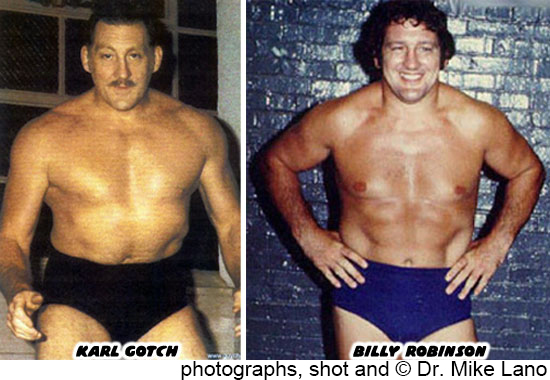
Through the lessons of Billy and Karl the deficiencies of the BJJ system was exposed. In fact a major deficiency had been exposed in the early UFC battles featuring Royce Gracie. He seemed to have a weakness against people that were not dressed in traditional jujitsu uniforms, it was apparent when he fought Ken Shamrock and Kimo Leopoldo who only wore shorts. Helio had taught his sons to work while using a gi. The judo uniforms were what had helped Helio in his famous battles. The clothing could be grabbed to help generate leverage even for people that weren't as strong as their opponents. The clothing could be used to move opponents, get them off balance and even trap and choke people out. When Royce did not have something to hold onto it was more difficult to control his opponents and work a submission move. What Sakuraba needed was a system that could control his opponents arms and legs while standing or even from the ground but that did not rely on clothing to grab onto. He began studying Catch in early on in his wrestling career. By the time he had exploited it against the BJJ students and Gracie family he was well versed at what was capable using only traditional holds. In fact the uniform that had served Royce so well in his early competitions worked against him the first time he fought Sakuraba. The Japanese fighter would pull Royce upside down by his belt so that he couldn't escape from the floor. Then Sakuraba would throw a punch whenever he saw an opening on the upturned Gracie.
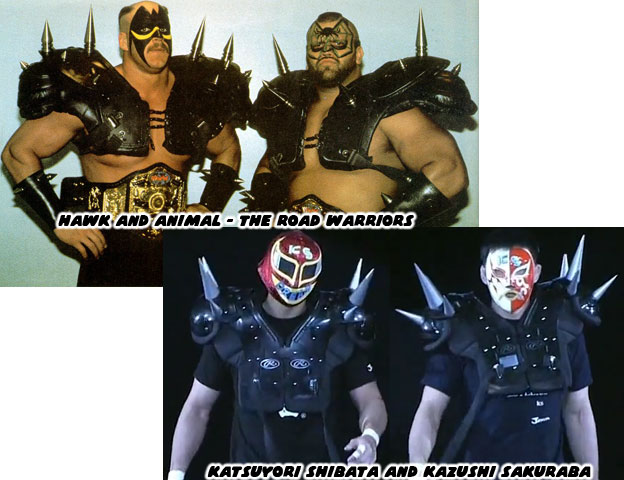
The more Sakuraba learned about the system the better he became at the grappling game. As a huge fan of pro wrestling he went out of his way to pay an homage to his idols each time he stepped into the ring. These outlandish displays hid the very dangerous techniques he was picking up. He studied the lessons of Billy Riley and Billy Robinson that had brought the fighting art over from England decades earlier. Riley's training ground was dubbed the Snake Pit, it had generated some tremendous talent. It would be knocked down and rebuilt over the century but never lost its allure. The current caretaker and trainer Roy Wood was the subject of a short documentary on catch-as-catch-can. It turned out that Catch had actually been a long time gaining a reputation in the West. Before the pro wrestling business became "sports entertainment" the best wrestlers were as well regarded as professional boxers. In fact to help himself get over in the business Karl Charles Istaz had taken the surname of the early US Catch hero Frank Gotch. Greco Roman wrestling was still practiced in gyms but a variation that had modern roots, an understanding of joint locks and submission holds was taking shape. This was in the 18th and 19th century well before the first "new" Olympic Games in 1896. In fact some of the modern wrestling forms predated the Kung-Fu taught by Ng Mui to Wing Chun, and heroes Huo Yuanjia and Wong Fei Hung. Frank Gotch, just so you know, was the first US wrestler to gain merit against the European champions.
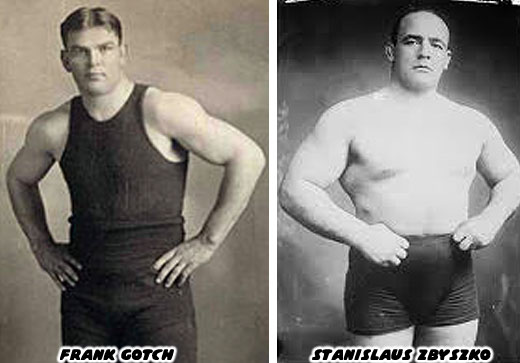
Frank was one of the luminaries of the sport. Others included the Great Gama from India and Stanislaus Zbyszko from Poland. Those men were legitimate champions of the sport and proponents of the Catch school. In England the working class enjoyed the wrestling arts for both the calisthenic properties as well as the gambling reasons. The best were masters of the Catch school, then called the Scientific Method of wrestling, to differentiate itself from the Greco-Roman school. In the US the working class and farmers also enjoyed wrestling. Young Abraham Lincoln was said to have been a good wrestler but he was not the only US President with wrestling roots. George Washington, Andrew Jackson, Ulysses S. Grant and Theodore Roosevelt were also wrestlers in their youth.
In the late 1800s traveling carnivals would put out open challenges to try and defeat their wrestler, usually also the circus strongman. The tradition had survived in remote parts of the world up until the modern times. In a previous blog I had mentioned the wrestler named He-Man was a circus wrestler up until his murder in 2010. Those foolish enough to try would and take He-Man and his kind would get bent over backwards. The reputation of the traveling performers often preceded them. The promoters learned the importance of creating a character and building a legacy. Legends would surface of men that had fought bears, alligators and mountain lions with their bare hands. Anyone foolish enough to grapple with them would surely be skinned alive. That cycle of hype and show would go on to shape the legends that founded the early US territories. It planted the seeds of pro wrestling as more of a staged battle than an actual fighting art. The Bleacher Reoprt had a great slideshow on the evolution of pro wrestling for those interested in seeing some archival footage.
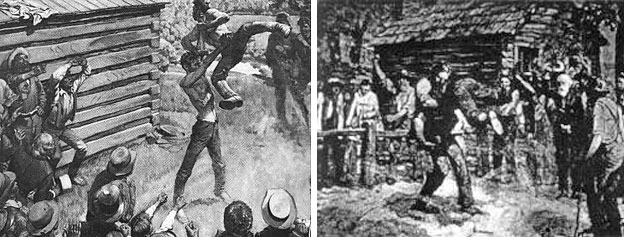
Some wrestlers still held onto the old traditions though. When they could they would participate in genuine shoots, sometimes for the money but sometimes to build a name. These fighters had earned a reputation as being hookers, legitimate wrestlers that could easily break bones. Unfortunately the times were catching up with the sport. Media was changing the face of sports and entertainment. A long career was not guaranteed for those that pursued submission wrestling. The money and longevity was in entertainment. Wrestlers were expected to develop a character, a personality and "sell" moves and holds to the audience without actually hurting their opponents. Film had changed the landscape of the early sports reporting but not nearly as much as television. Some of the early stars did have high school and college wrestling backgrounds. Others were from track and field or football programs. They were filled in by other pro and catch wrestlers as they developed a gimmick. The biggest names would turn out to be the ones with the best mic skills and not necessarily the best wrestling abilities. This rubbed many veterans the wrong way.
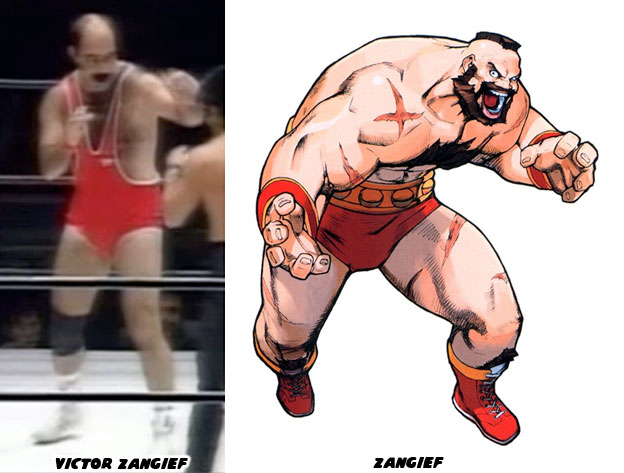
This trend was not exclusive to the US alone. In Japan, in the UK and around the world where matches were being televised the genuine shooters were slowly being replaced by handsome men and women that looked great on TV. Skills could always be taught to the talent and to be fair some of the people that picked up wrestling became very good workers. The influence of every type of wrestler could be seen in the first few generations of fighting game character. Street Fighter did not only look to Muay Thai for real legends, it also looked to boxing and wrestling as well. It did not matter if the game were a 2D or 3D title because the designers gravitated towards what worked best and what was easily identifiable to audiences. I mean a person in a gi with a black belt was obviously a karate master and a person in wrestling trunks was obviously a grappler. It was relatively easy for the developers to put in a fighter that reminded people of Bruce Lee or a wrestler like Hulk Hogan because they had international exposure.
As technology evolved so too did the ability to present characters that kept pace with their real-life counterparts. For example, in the '80s Hulk Hogan was as American pride as a character could get but in the '90s the anti-hero was en vogue. Hogan ditched his clean-cut image and became a "bad guy" called Hollywood Hulk Hogan. There was a notable difference between Muscle Power and Bass Armstrong from the respective World Heroes and Dead or Alive series. It was uncanny how similar game characters would appear like their real world counterparts. Of course the developers at ADK and Tecmo knew to change just enough details so that they wouldn't get sued for trademark infringement.
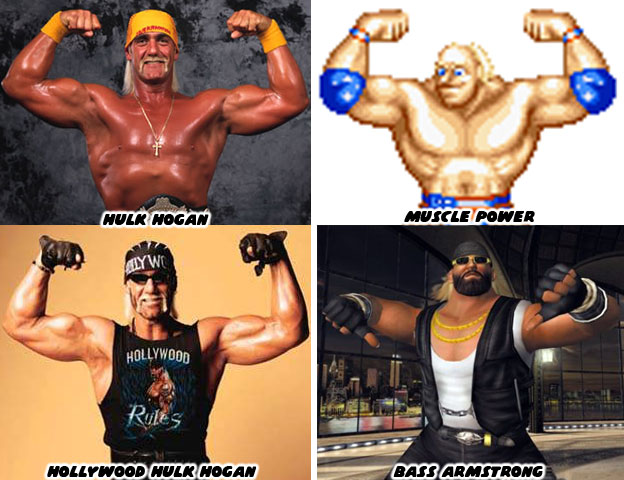
Developers would even create alternate costumes to place on 3D models that made them look more like their inspiration. I mean Fei Long was very much a Bruce Lee clone but Capcom found that they could create costumes that mirrored those worn in several Lee films and sell them to audiences. Now if only the developers could create download packs to make the character fight differently, then you would have my attention. But I digress! I was talking about wrestling before I got sidetracked. Catch wrestling went underground but never disappeared. The narrative that kept the sport alive was similar to a popular book and groundbreaking film. The next blog will look at the seedy world that kept Catch alive. As always if you enjoyed this blog and would like to sponsor me please visit my Patreon page and consider donating each month, even as little as $1 would help make better blogs and even podcasts!

No comments:
Post a Comment